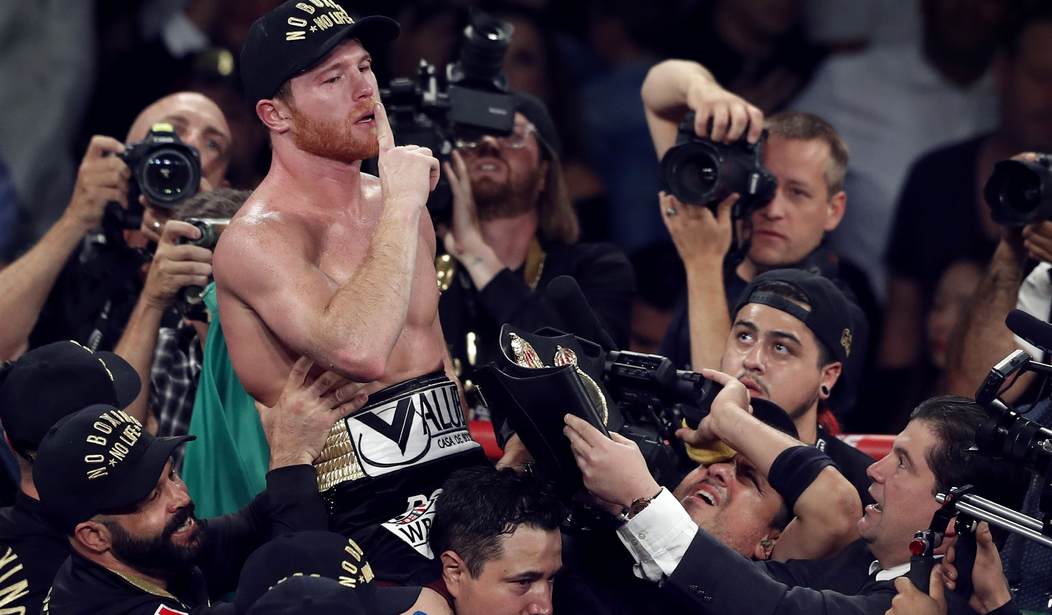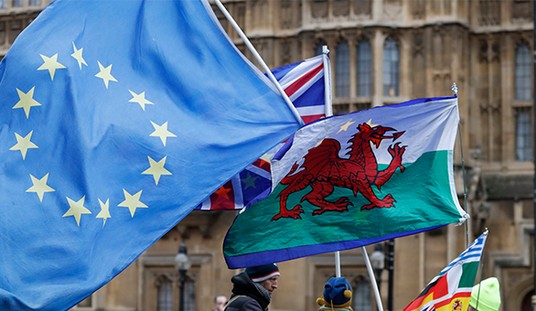I’ve had my eye on the fallout from the Canelo Alvarez/Billy Joe Saunders fight since it happened on May 8, as it was one of the most highly attended sporting events since the start of the pandemic. It may have been the single most highly attended indoor event in the United States, period, since COVID arrived last February, in fact. The retractable roof on AT&T Stadium was closed.
Seventy-three thousand people packed together, talking, screaming, occasionally visiting small, poorly ventilated public restrooms inside the stadium that many other strangers had passed through in the span of a few hours. If anything was going to seed a new outbreak in Texas, you’d expect Alvarez/Saunders to be it. It wouldn’t be the first sporting event to have driven a rise in cases if it did, either. Scientists believe that a soccer match in Lombardy last February helped seed that region’s catastrophic first wave.
COVID symptoms don’t appear overnight after infection, though. The CDC says they can take up to 14 days to manifest. So if in fact the fight was a superspreader event, we’d need to wait until May 22 — today — to have a fair sense of it by examining Texas’s numbers. And if those numbers haven’t risen, if the fight seemingly *didn’t* seed an outbreak, what should we conclude about the risk of full attendance at stadiums at this stage of America’s national vaccination effort?
The verdict: Not only haven’t cases risen in Texas or Tarrant County, where AT&T Stadium is located, they’re down since May 8 in both jurisdictions. Statewide the seven-day average on that date was 2,507 cases. As of two days ago, the most recent date for which data is available, it was 2,024.

That’s a 19 percent decline. County cases, meanwhile, averaged 169 per day on May 8. As of two days ago, that had dipped to 134.

A 21 percent decline. Does that mean no one got infected at the fight? Nah, of course not. Just 42 percent of Texans have had their first vaccine dose. Even if you assume another 20 percent of the state’s population has natural immunity after recovering from COVID, that still leaves more than a third who are susceptible to infection. In a crowd of 73,000, it has to be that many were unvaccinated (probably most, since the unvaccinated are more willing to take risks by socializing), some small percentage of them were infected when they got there, and they passed the virus on to other unvaccinated people during the course of the evening.
But either a wider outbreak couldn’t get going afterward due to too many people in the population being immune or there was/is an outbreak happening that’s being “hidden” by the fact that cases statewide and countywide are dropping rapidly. I.e., even if, say, 200 people got infected at the fight, it may be that cases are falling at an accelerating rate across the rest of the population in Texas such that there’s no clear evidence in the data of any outbreak.
Whatever the truth is, it’s good news. In fact, it turns out that Texas is seeing its lowest positivity rate of the entire pandemic right now:

Tim Miller lives in California’s Bay Area, which has become one of the safest places on Earth from coronavirus. More than 68 percent in San Francisco County have been vaccinated and the positivity rate there is, no typo, 0.5 percent. Nearby Alameda County is only slightly worse, with 62 percent vaccinated and a positivity rate of 1.0 percent. Yet because of California’s hypercautious liberal state and local governments, the Golden State Warriors had a 35 percent capacity limit for their playoff game this week and outdoor sports stadiums are still capped at 50 percent. That’s madness under the circumstances, Miller writes:
There is no meaningful definition of the word “crisis” that applies to the San Francisco Bay Area’s relationship with COVID-19 given the above data, so maintaining crisis-level dictates by the government on free people is simply wrong.
The virus has been largely defeated here and in many other communities around the country. The curve has been more than bent, it has been crushed. And that has happened in large part because people here took it seriously, socially distanced, wore masks, and got vaccinated. People’s resilience and selflessness and prudence should be celebrated, not forced upon them after it is no longer necessary.
We all deserve the chance to get together, to celebrate, to exhale. If sports brings anything to a community it is shared camaraderie and an escape from the sometimes harsh reality of our daily lives. It’s time to allow people to have that escape and togetherness again. Vaccinated people should be packing the stadiums, cheering on the home team, booing the rival, and giving people the revelry that they deserve.
Texas is in the bottom half of the 50 states measured by vaccination rates yet it appears there’s already enough immunity across the population that 73,000 fans can get together indoors with no impact on the downward trend line in cases. Joe Biden’s hopeful scenario a few months ago that enough Americans might be vaccinated by July 4 to make small backyard barbecues safe has never seemed more quaint. Why shouldn’t we fill the stadiums at this point? Or, if we want to play it safe for just a few more weeks, why shouldn’t we fill them by, say, June 15, when California is planning to lift most of its remaining restrictions?
There’s really only one last test for COVID over the next six months. Look again at the first graph above and you’ll see that it was around this time one year ago that cases in Texas began to rise, ultimately producing the state’s first true wave in June and July. That was probably due to rising temperatures: As spring turned to summer and the Texas heat turned insufferable, people began spending more time indoors again, which raised the risk of infection. The state won’t experience another wave like last year’s given how much immunity there is in the population now, but it could experience some sort of wave among its unvaccinated residents over the next six weeks. If it doesn’t, what other conclusion is there than that the pandemic is effectively over, at least until winter?








Join the conversation as a VIP Member